Table of Contents
- How to Understand Stainless Steel
- Challenges in MIG Welding Stainless Steel
- Setting Up Your MIG Welding Equipment
- 5. Tips for Effective MIG Welding
- 7. Troubleshooting and Improvement
- 8. Factors to Consider for Successful Welding
- 9. Specifics of Welding Stainless Steel Using MIG
- Conclusion
- FAQs about How To mig Weld Stainless Steel
Mastering the art of MIG welding stainless steel requires precision and technique. From comprehending its properties to addressing challenges such as contamination and distortion, knowing how to MIG weld stainless steel is a craft that demands refinement.
This comprehensive guide unravels the essentials, offering insights from setup to advanced tips, ensuring your journey toward flawless stainless steel welds is informed and successful. Dive into this resource to enhance your welding prowess and master the art of welding stainless steel with precision!
How to Understand Stainless Steel
Stainless steel is a cornerstone in various industries due to its exceptional properties. Understanding its composition, characteristics, and variations is fundamental for successful MIG welding.
Different Types and Properties of Stainless Steel:
- Austenitic, Ferritic, and Martensitic Grades: Stainless steel comprises various grades, each with distinct properties. Austenitic grades (e.g., 304, 316) offer excellent corrosion resistance and are widely used in food processing and construction industries. Ferritic grades possess magnetic properties and resist corrosion and oxidation, while martensitic grades are known for their hardness and strength.
- Corrosion Resistance: One of stainless steel’s key attributes is its exceptional corrosion resistance, making it ideal for environments prone to moisture, chemicals, and high temperatures.
- High Strength and Durability: Stainless steel exhibits robust mechanical properties, including high tensile strength and durability, making it suitable for structural applications.
- Heat Resistance: Certain stainless steel grades boast remarkable heat resistance, retaining their properties even at elevated temperatures, which is advantageous in applications like high-temperature processing or automotive exhaust systems.
Understanding the different grades, properties, and applications provides crucial insights into selecting the correct stainless steel for specific welding projects. Mastery of these characteristics aids in optimizing welding parameters, ensuring prosperous and resilient welds in various applications and environments.
Challenges in MIG Welding Stainless Steel
Stainless steel, a versatile and durable material, presents specific challenges during MIG welding that differ from other metals.
Contamination: One primary challenge is contamination. Even minimal exposure to contaminants like grease, oil, or residue can compromise the weld’s quality. Proper pre-cleaning of the stainless steel surfaces is crucial to ensure a clean, uncontaminated welding area.
Distortion: Another common issue is distortion, often caused by the high thermal conductivity of stainless steel. The intense heat generated during welding can lead to warping or bending of the metal. Techniques to manage heat input, such as controlling travel speed and employing proper fixturing, are essential to mitigate distortion.
Addressing these challenges effectively requires a deep understanding of stainless steel’s behavior under heat and the implementation of precise welding techniques. Through careful preparation and execution, these challenges can be managed, allowing for successful MIG welding of stainless steel.
Setting Up Your MIG Welding Equipment
Proper setup of your MIG welding equipment is critical for successful stainless steel welding. Each component, from wire selection to adjusting voltage and amperage, is crucial in achieving high-quality welds.
1. Choosing the Right Wire for MIG Welding Stainless Steel
Selecting the appropriate wire is a pivotal step. Stainless steel welding wires come in various compositions and diameters, each impacting the weld’s strength, appearance, and quality. Factors like the stainless steel grade being welded and the desired characteristics of the weld influence the choice of wire. Wireless with specific additives are typically used to enhance corrosion resistance or weld penetration.
2. Choosing the Right Gas for MIG Welding Stainless Steel
Shielding gas is indispensable in MIG welding, as it prevents atmospheric contamination during welding. For stainless steel, selecting the correct gas blend is crucial. Commonly used mixes include argon with a small percentage of oxygen or a combination of argon and carbon dioxide. The specific blend depends on the stainless steel grade and the desired properties of the weld. These gases not only shield the weld but also influence the weld’s appearance and penetration.
3. Adjusting Voltage & Amperage Settings
Accurate adjustment of voltage and amperage settings is essential for successful MIG welding. These settings vary based on factors such as the thickness of the stainless steel and the wire diameter used. Striking the right balance between heat input and control is crucial to avoid issues like burn-through or inadequate fusion. Experimentation and practice are often necessary to find the optimal settings for each welding scenario.
4. Preparation for Welding
Proper preparation of the stainless steel surface is paramount to ensure successful MIG welding.
- Pre-Cleaning Process for Stainless Steel: Thoroughly pre-cleaning the stainless steel surface is imperative before initiating the welding process. This involves removing contaminants such as oil, grease, paint, or rust that might compromise the weld quality. Solvent-based cleaners or mechanical methods like wire brushing or grinding are commonly employed to achieve a clean, contaminant-free surface.
- Importance of Pre-Cleaning: Contaminants on the surface can lead to defects in the weld, such as porosity or lack of fusion, affecting its strength and integrity. Additionally, stainless steel’s susceptibility to contamination amplifies the need for meticulous pre-cleaning to ensure a pristine welding environment.
- Surface Protection during Welding: In addition to pre-cleaning, protecting the welding area during the process is crucial. Shielding gases are employed to prevent atmospheric contamination during welding. Techniques like back purging or using gas cups effectively cover the backside of the weld joint, minimizing oxidation and ensuring high-quality welds.
By meticulously pre-cleaning the stainless steel surface and implementing protective measures during welding, you lay the foundation for successful MIG welding. The adherence to proper pre-welding practices significantly enhances the quality and durability of the final weld, ensuring optimal results.
5. Tips for Effective MIG Welding
Mastering MIG welding for stainless steel demands attention to technique and precision. Here are essential tips to elevate your welding prowess:
- Proper Technique and Speed: Maintaining an appropriate gun angle and travel speed is critical. Tips that are too steep or fast travel speeds can result in inadequate penetration or a weak weld. Strive for consistency to achieve uniform and strong weld beads.
- Consistent Arc Length: Keeping a constant arc length is vital. Fluctuations in the arc’s distance can lead to uneven welds or spatter. Maintaining a steady arc length ensures better control over the welding process and weld quality.
- Adjusting the Inductance: Manipulating inductance settings can improve the weld’s puddle flow. Experimenting with inductance adjustments allows you to optimize the welding process, enhancing control over the molten pool and achieving smoother welds.
- Preventing Contamination: Regularly swapping drive rolls and liners helps prevent contamination. Contaminated equipment can introduce impurities into the weld, compromising its integrity. Periodic checks and replacements of these components are essential for clean welds.
- Utilizing Post-Flow Gas Coverage: Implementing post-flow gas coverage after welding protects the weld from oxidation as it cools. This shielding prevents the formation of defects and ensures a clean and durable weld.
You’ll advance your MIG welding skills by adhering to these tips, focusing on technique, maintaining equipment integrity, and consistently creating high-quality stainless steel welds. These techniques will refine your abilities, leading to impeccable welds and enhanced confidence in your welding capabilities.
6. Advanced Techniques – Using Pulse MIG
Pulse MIG welding presents an advanced method for welding stainless steel, offering distinct advantages over traditional continuous MIG welding.
Pulse MIG Overview: Pulse MIG involves alternating between high and low current levels during welding. This technique provides better control over heat input, reducing the overall heat applied to the material compared to continuous MIG. The pulsing action helps manage distortion and minimizes burn-through risk, especially when welding thinner stainless steel materials.
Advantages of Pulse MIG for Stainless Steel:
- Reduced Heat Input: Pulse MIG’s intermittent nature allows for controlled heat input, minimizing distortion and warping of the stainless steel, particularly in thinner sections.
- Enhanced Control: The pulsing action offers greater control over the weld pool, allowing for precise manipulation and better bead control, resulting in cleaner and more aesthetically pleasing welds.
- Lower Spatter Levels: Pulse MIG typically generates fewer spatters, reducing the need for extensive post-weld cleaning and ensuring a neater weld appearance.
Application and Settings: Pulse MIG settings can vary based on the specific stainless steel grade, thickness, and joint configuration. Adjusting pulse parameters such as peak current, background current, and pulse frequency allows for customization according to the welding requirements.
Considerations: While Pulse MIG offers numerous benefits, it requires familiarity and practice to optimize its advantages fully. Experimentation with settings and understanding their impact on the weld quality is essential for successful implementation.
By incorporating Pulse MIG techniques into your stainless steel welding repertoire and understanding its nuances, you can elevate your welding capabilities, especially when dealing with thinner materials or applications demanding precise control over heat input and weld appearance.
7. Troubleshooting and Improvement
Identifying issues in stainless steel welds and implementing strategies for optimization is crucial for achieving impeccable results.
Identifying Issues in Stainless Steel Welds:
- Porosity or Incomplete Fusion: Pores or incomplete fusion in welds can weaken the joint. These issues often stem from contamination, improper shielding gas, or incorrect welding parameters.
- Cracking or Distortion: Excessive heat or inadequate control during welding can lead to cracks or distortion in the welded stainless steel. These issues are prevalent in thicker materials and can affect the structural integrity of the weld.
Optimizing Stainless Steel Welds:
- Improving Shielding: Ensuring adequate gas coverage and back purging, especially in critical joints, minimizes oxidation and enhances weld quality.
- Refining Technique: Continual welding technique practice and refinement, including maintaining consistent arc length and travel speed, significantly contribute to better weld quality.
- Experimentation with Settings: Fine-tuning voltage, amperage, and pulse parameters (if using Pulse MIG) based on trial and error aids in achieving optimal settings for specific stainless steel grades and joint configurations.
- Joint Preparation: Proper joint preparation, including beveling and edge alignment, ensures better penetration and stronger welds.
Addressing welding issues and implementing improvement strategies requires a systematic approach, troubleshooting potential problems, and applying corrective measures. You can refine your welding process through consistent practice and a keen eye for detail, achieving superior and flawless stainless steel welds.
8. Factors to Consider for Successful Welding
Achieving successful MIG welding of stainless steel involves meticulous attention to crucial factors that significantly impact the weld’s quality and integrity.
Selection of Gas Blend:
- Inert Gas Composition: The suitable gas blend shields the weld pool and prevents contamination. Different stainless steel grades may require specific gas compositions for optimal results.
Bracing the Joint During Welding:
- Fixture and Support: Proper fixturing and support of the workpiece during welding help minimize distortion and maintain joint alignment, especially when dealing with larger or more complex structures.
Cleaning the Weld Joint:
- Surface Preparation: Thoroughly cleaning the weld joint before welding is essential to remove any surface contaminants that could compromise the weld quality.
Distributing Heat from the Weld:
- Heat Control: Controlling the heat input during welding is crucial, especially for stainless steel, to prevent excessive distortion or heat-affected zones that could compromise the material’s properties.
Considering these factors and addressing each aspect diligently ensures a systematic approach to MIG welding stainless steel. By focusing on gas selection, joint preparation, heat distribution, and maintaining proper support, you can consistently enhance the overall welding process and produce high-quality stainless steel welds.
9. Specifics of Welding Stainless Steel Using MIG
Understanding the specifics of welding stainless steel using the MIG process involves a comprehensive grasp of crucial elements and techniques for successful outcomes.
Torch Setup and Correct Angle Determination:
- Torch Configuration: Proper torch setup ensures consistent gas flow and wire feeding, which is essential for clean and efficient welds. Correct angle determination helps achieve optimal penetration and deposition of the weld bead.
Filler Materials and Bead Pulling Techniques:
- Filler Material Selection: Choosing the suitable filler material compatible with the stainless steel grade and joint requirements is crucial for achieving solid and durable welds.
- Bead Pulling Techniques: Effective bead pulling techniques ensure uniformity and strength in the welded joint.
Understanding the intricacies of torch setup, angle determination, filler material selection, and bead-pulling techniques enhances control and precision during welding. Mastering these specifics is integral to achieving superior results in MIG welding of stainless steel.
10. Choosing the Right Gear and Materials
Selecting the appropriate gear and materials for MIG welding stainless steel lays the groundwork for a successful and efficient welding operation.
Necessary Equipment for MIG Welding Stainless Steel:
- Welding Machine: Investing in a quality MIG welding machine capable of handling stainless steel welding requirements is essential. Ensure it offers sufficient power and variable controls for voltage and wire speed adjustments.
- Gas Regulator and Hose: A reliable gas regulator and hose are crucial to ensure consistent and proper gas flow during welding, maintaining the shielding gas integrity.
- Personal Protective Equipment (PPE): Equipping oneself with appropriate PPE, including a welding helmet, gloves, apron, and safety glasses, is paramount to ensure safety and protection during the welding process.
Electrodes and Consumables:
- Quality Electrodes: Choosing high-quality electrodes suitable for stainless steel welding ensures improved arc stability and reduced spatter, contributing to cleaner and stronger welds.
- Consumables Maintenance: Regularly inspect and replace consumables like contact tips, nozzles, and liners to prevent contamination and maintain optimal welding performance.
By investing in quality welding equipment, ensuring proper maintenance of consumables, and prioritizing personal safety with the right protective gear, welders can set the stage for successful and safe MIG welding operations on stainless steel.
Conclusion
Mastering the art of MIG welding stainless steel demands a blend of precision, technique, and an understanding of the nuances specific to this versatile material. From meticulous equipment setup to fine-tuning welding techniques, this comprehensive guide covers essential aspects, offering a roadmap to navigate challenges and optimize results.
By embracing meticulous preparation, adopting advanced techniques like Pulse MIG, troubleshooting effectively, and selecting the right gear, welders can elevate their craft, consistently producing flawless stainless steel welds.
With attention to detail and a commitment to continuous improvement, achieving exceptional results in MIG welding stainless steel becomes attainable, marking a journey toward proficiency and excellence in welding.
FAQs about How To mig Weld Stainless Steel
What welds are best for stainless steel?
The best welds for stainless steel are achieved using techniques such as TIG (Tungsten Inert Gas) welding or MIG (Metal Inert Gas) welding with specialized stainless steel filler wire.
What gas do I need to MIG weld stainless steel?
A shielding gas mixture of argon and helium or argon and carbon dioxide is commonly used for MIG welding stainless steel. The choice of gas depends on the specific stainless steel grade and welding requirements.
What is the easiest way to weld stainless steel?
The easiest way to weld stainless steel is subjective and depends on personal preference and specific project requirements. However, MIG welding is often considered easier for beginners due to its simplicity and ability to weld in various positions.
What happens if you weld stainless with mild steel wire?
Welding stainless steel with mild steel wire can lead to several issues. The weld joint may experience reduced corrosion resistance and compromised mechanical properties. It is important to use specifically designed stainless steel filler wire for welding stainless steel.
Is it better to weld stainless steel or mild steel?
The choice between welding stainless steel or mild steel depends on the application and the desired properties of the final product. Stainless steel offers superior corrosion resistance and is often preferred in environments where corrosion is a concern. Conversely, Mild steel may be more cost-effective for specific applications.
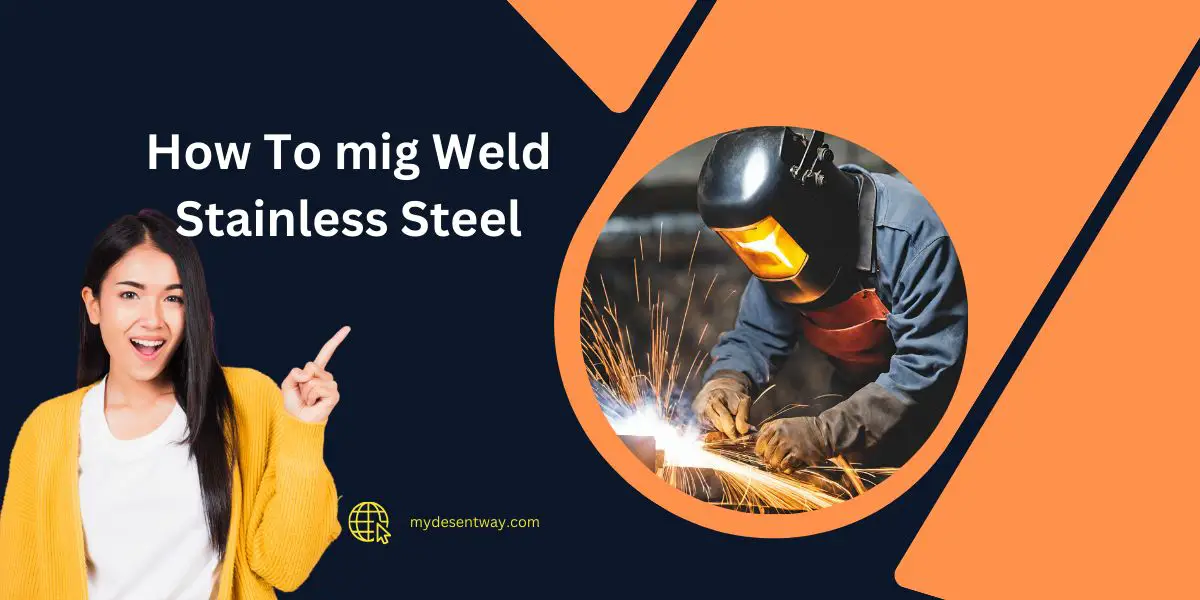
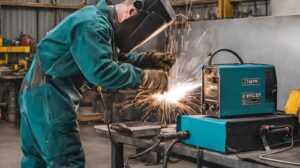
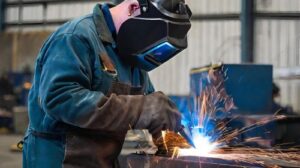
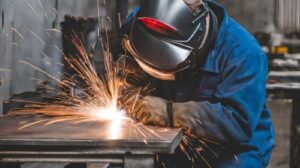
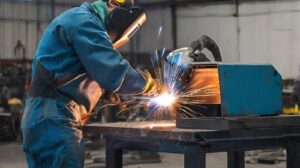
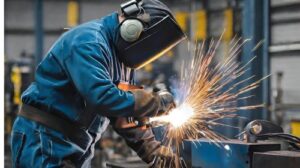
4 thoughts on “How To Mig Weld Stainless Steel”